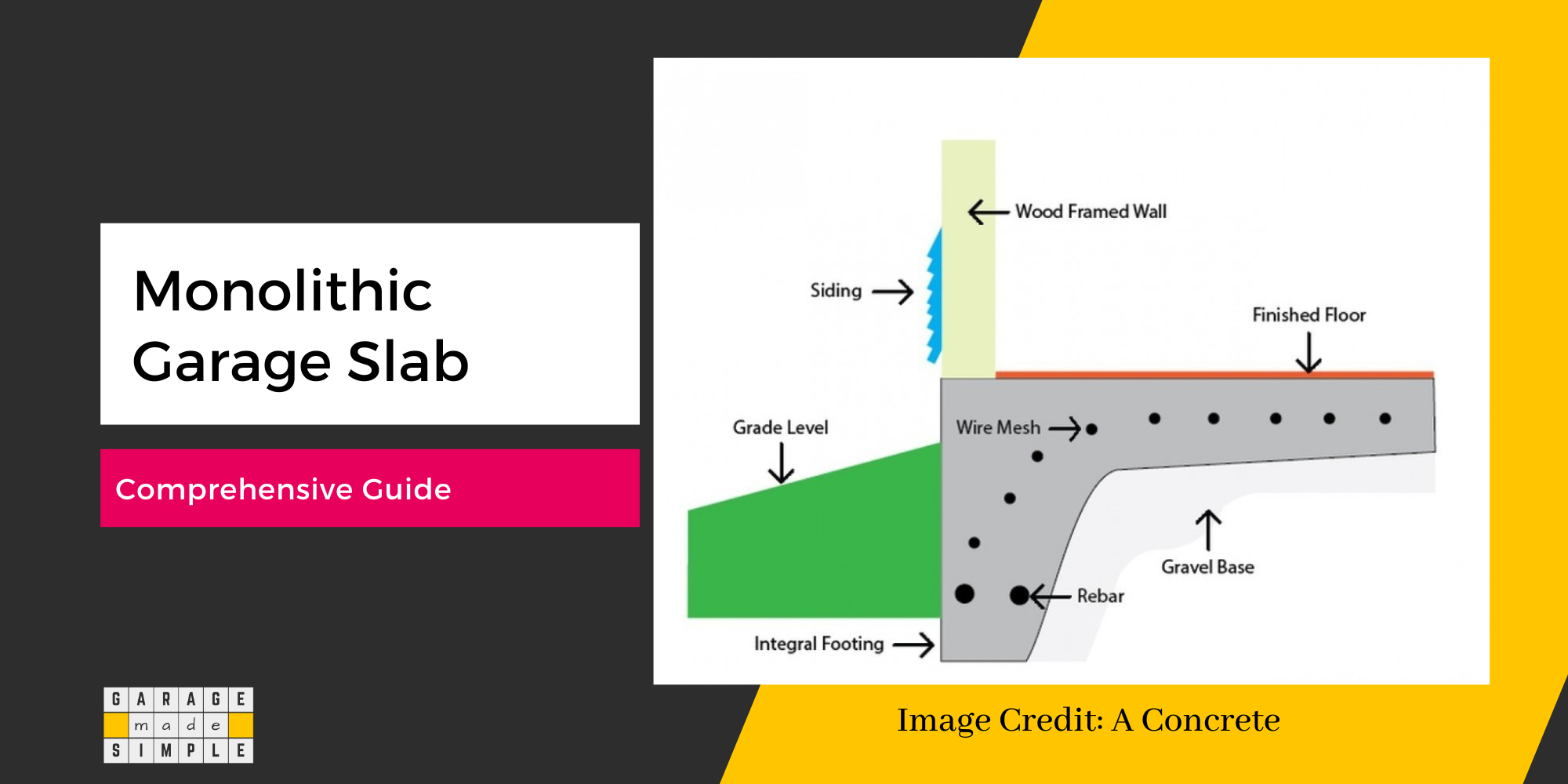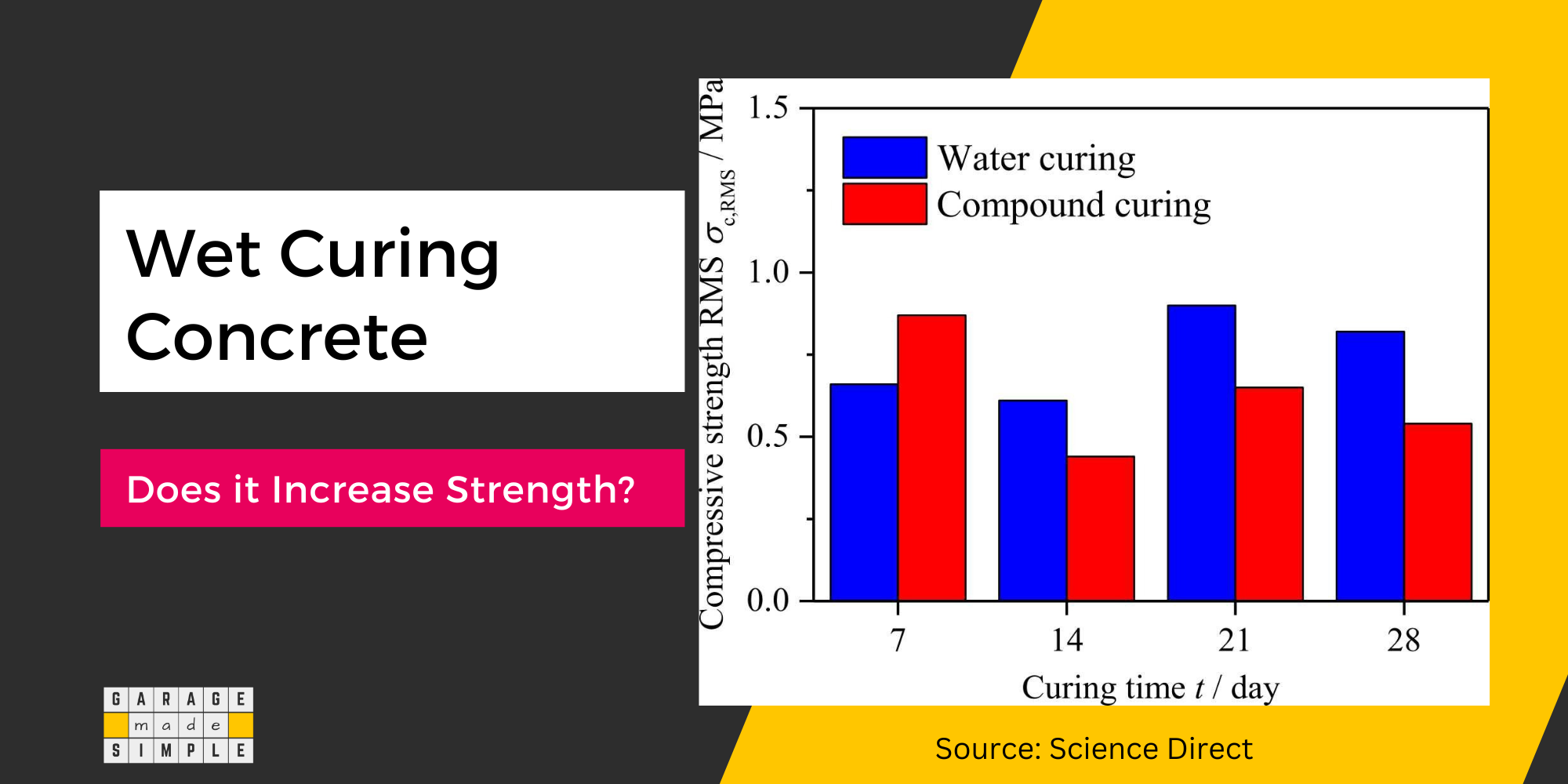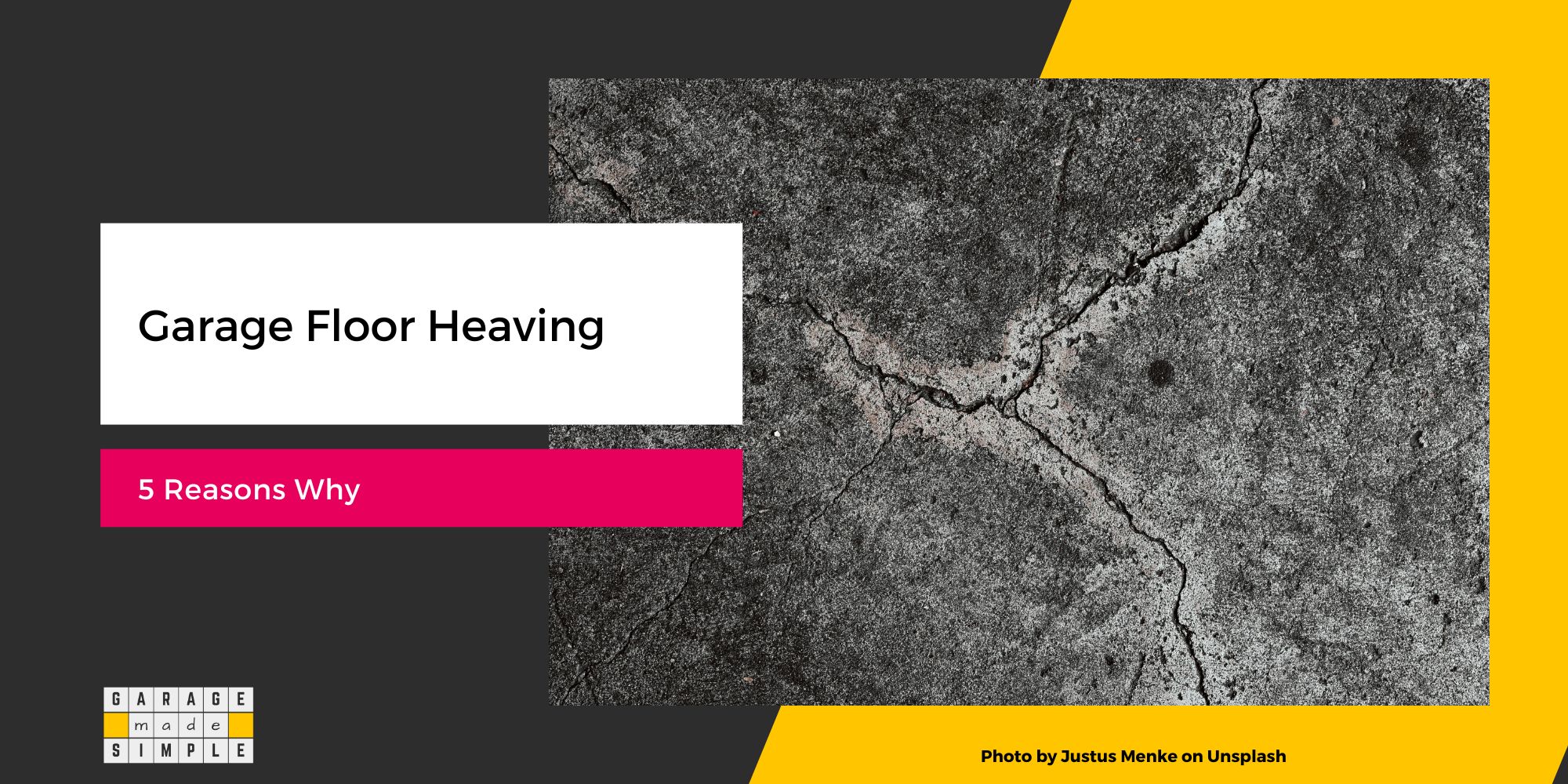3 Basic Concrete Curing Methods and Their 15 Effective Variations!
As an Amazon Associate, I earn from qualifying purchases.
Concrete gains strength over a period of 4 weeks through the concrete curing process. There are 3 basic concrete curing methods and each has a few variations.
Concrete curing is a chemical process that involves hydration, where water reacts with cement to form a crystalline structure, resulting in the hardening and strengthening of the concrete. The success of the concrete curing process is influenced by factors such as temperature and humidity.
To create the ideal concrete curing conditions you can use any variation of one of the 3 basic concrete curing methods. Of course, each has there pros and cons.
This article explains each of the variations within the 3 basic concrete curing methods, so that you can pick the one that will work best for your garage project and climatic conditions.
3 Basic Concrete Curing Methods Explained
The commonly used concrete curing methods can be classified into 3 primary methods, as under:
1. Wet or Moist Curing:
The wet or moist concrete curing method involves maintaining a constant level of moisture on the surface of the concrete after it’s poured.
There are 6 distinct variations in which this can be achieved. By preventing rapid evaporation, wet curing of concrete allows for optimal hydration and strengthens the concrete.
Not only is this method most commonly employed, based on a research paper published in ScienceDirect it results in 50% higher strength as compared to other concrete curing methods.
2. Moisture Loss Prevention:
Another approach is to prevent moisture from escaping the concrete surface. This can be done by covering the freshly poured concrete with plastic sheeting or other impermeable materials.
By creating a barrier against evaporation, this method helps to retain moisture within the concrete, facilitating proper curing.
3. Curing Compound Application:
In this method, curing compounds, typically in the form of liquid membranes, are applied directly to the concrete surface. These compounds create a protective film that seals in moisture and prevents it from evaporating too quickly.
By maintaining a controlled environment conducive to hydration, curing compounds aid in the curing process and promote the development of strong and durable concrete.
Variations of Wet Concrete Curing Process
There are 6 different variations of the wet concrete curing process.
1. Ponding:
Ponding involves creating small dams around the perimeter of the concrete slab and filling the area with water. This method ensures continuous hydration of the concrete surface by keeping it submerged.
Ponding is effective for small to medium-sized projects where water can be easily contained. As such it is one of the popular concrete curing methods for garage slabs.
2. Sprinkling:
Sprinkling is a simple yet effective method where water is sprayed directly onto the concrete surface at regular intervals. This helps maintain moisture levels and prevents rapid evaporation.
However, caution must be exercised to ensure even coverage and avoid localized water pooling to prevent uneven curing.
3. Wet Coverings:
Covering the concrete with wet burlap, blankets, or similar materials is a very traditional and fairly effective method of wet curing. These coverings are kept damp throughout the curing period to maintain a moist environment around the concrete.
This method is suitable for smaller projects and is often used in conjunction with other curing methods for optimal results. However, one has to be aware that there is a risk of the wet burlap or blanket leaving a stain on the fresh concrete surface.
4. Fogging:
Fogging involves using misting systems to spray a fine mist of water over the concrete surface at regular intervals. It is some what similar, though a gentler option, to sprinkling.
This method helps to maintain moisture levels without saturating the surface, making it suitable for both indoor and outdoor applications.
5. Soaker Hoses:
Soaker hoses are laid out on the concrete surface and activated to release water slowly over the curing period. The hoses evenly distribute moisture, ensuring consistent hydration of the concrete.
This method is convenient for large areas and can be automated for efficiency.
6. Wet Mats:
Wet curing mats are specially designed coverings that are placed directly on the concrete surface and kept moist throughout the curing process. These mats provide a barrier against evaporation while allowing for air circulation, promoting uniform curing.
Wet mats are reusable and can be easily cleaned for future use, making them a cost-effective option for long-term projects. As such they are preferred by contractors and construction companies.
Variations of Moisture Loss Prevention Curing of Concrete
There are 3 different variations of the moisture loss prevention curing of concrete process.
1. Plastic Sheeting:
Plastic sheeting is a commonly used method to prevent moisture loss during concrete curing. By covering the freshly poured concrete with a layer of plastic, you create a barrier that inhibits evaporation.
This helps to maintain the necessary moisture levels for proper curing. Ensure the plastic is securely anchored and covers the entire surface to effectively retain moisture. Secure it against wind gusts in outdoor applications.
2. Impervious Paper:
Impervious (wax coated) paper, instead of plastic sheeting can also be used to prevent moisture loss during concrete curing.
This is especially useful for small indoor concrete slabs indoors, where high standards of concrete finish are required.
3. Covering with Sawdust, Sand or Soil:
This method is especially useful on small uneven concrete surfaces. The concrete surface is covered with a polythene sheet, which in turn is covered with sawdust, sand or soil. It adapts to the unevenness of the concrete surface.
Variations of Curing Compounds for Curing Concrete
There are 6 different variations of curing compounds that can be used to form a membrane to retain moisture and promote the concrete curing process.
1. Acrylic-Based Compounds:
Acrylic-based curing compounds form a thin, protective film over the concrete surface, effectively sealing in moisture. They are easy to apply and provide good resistance to ultraviolet (UV) radiation, making them suitable for both indoor and outdoor applications.
2. Resin-Based Membranes:
Resin-based membranes penetrate deep into the concrete pores, forming a durable barrier that inhibits evaporation. They offer excellent adhesion to the concrete surface and can withstand harsh environmental conditions, making them ideal for high-traffic areas or where abrasion resistance is required.
3. Wax-Based Compounds:
Wax-based curing compounds create a moisture-retaining film on the concrete surface, facilitating proper curing. They are particularly useful for horizontal surfaces such as concrete floors and pavements, providing good moisture retention and easy application.
4. Petroleum-Based Compounds:
Petroleum-based curing compounds create a moisture barrier on the concrete surface, preventing rapid evaporation. They are typically used in moderate weather conditions and offer good coverage and adhesion.
5. Water-Based Membranes:
Water-based curing membranes provide effective moisture retention while allowing for slow moisture escape, creating a breathable film on the surface. They are environmentally friendly, low in VOCs, and suitable for various concrete applications.
6. Silicate-Based Compounds:
Silicate-based curing compounds penetrate deep into the concrete, reacting with calcium hydroxide to enhance strength and durability. They reduce surface dusting and are ideal for long-term curing in industrial and commercial settings.
Thank you very much for reading the post. I do hope you found it informative and useful.






